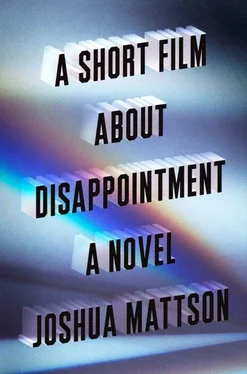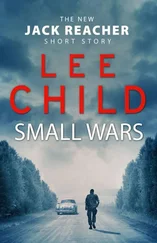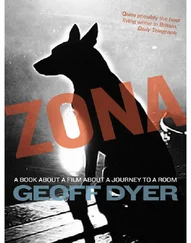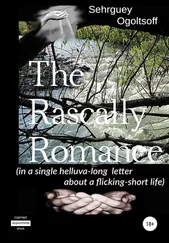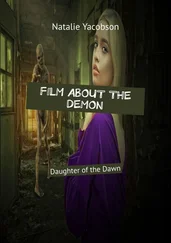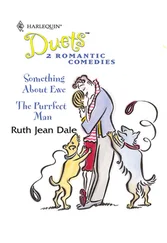I said, I shed a few tears in the locked toilet. Within an hour my facial muscles returned to my control. In the charging station I bought two Picnic Size Nougat Grenades, which I ate at the curb. After the condition recurred, my PocketMD insisted on a human doctor.
Dr. Lisa said, Explain when it happens.
I said, The symptoms begin when I ideate Osvald’s elimination. The generic fantasy of Osvald dying allows me to retain control of my face. For instance, if I thought of him getting hit by a car, my face would remain under my control. When a specific detail vivifies the thought, say, the title of the pornographic film playing when the meteorite strikes, the sad history of the tutued circus bear devouring his leg, the exact geographical location of the quicksand he sank in, leaving behind, on the surface, one of those pith helmets I associate with missing orchid hunters, my face solidifies into the expression I had at the time. Midexpression, this is grotesque and frightening to those in the vicinity.
Dr. Lisa took this in.
I said, I think he has possessed me. Do you get a lot of possession cases?
She said, Possession is not a treatable medical condition. Why don’t we try to find something within the area of my expertise?
Dr. Lisa ordered needles, medicine, machines, electromagnetism, physiotherapy. A technician explored my bowels. Electrodes, sessions in the nanobox. I was emphatic that there was to be no psychiatry. I filled out questionnaires on the frequency of my erections, the color of my sputum, the contents of my dreams.
At our next appointment, she diagnosed me. She is incorrect, but I prefer her wrongness to the rightness of others.
Dr. Lisa said, You have a conversion disorder.
She said, A disease of thought.
Tapping her temple, a dirty cuticle, a dimple.
She said, A disease of control.
Osvald first manifested with his ongoing attempt to pollute my lexicon. The miscegenation of our languages can be marked by the eruption of his adjectives. My column has become cluttered with his Latinate vocabulary, marred by his commas, undermined by the distraction of his erotic preoccupations, disturbed by the thuds of his clauses, lessened with his tone-deaf declarations, bungled articles, snubbed participles. My clean and curt sentences have thickened with the flab of his qualifiers.
But I got him back, oh, yes.
6.
THE TRIALS OF COUNT COZMA
DIR. GHEORGE NICOLESCU
89 MINUTES
Playing yesterday, today, and tomorrow at Cinema Acceptable, midnight, discounts for the costumed.
A highborn vampire can’t feed. Serfs will not serve as fare for a gourmand. Cozma tries to lure diplomats, heldentenors, confectioners, and essayists to his estate. Each sends polite regrets. Cozmylvania is an idyll. Bees bumble over fields of smetterhoch, the air is fragrant with hare’s blood.
He has a dysfunctional relationship with his assistant, Mihaela. When Mihaela suggests he listen to visitors instead of interrupting to brag of his collection of Sufi manuscripts before exsanguinating them, the count sulks, locks himself in his coffin. Mihaela finds a psychotherapist, Zigfried Yunt, who is willing to help. Cranky from low blood sugar, Count Cozma drains Dr. Yunt. Cheers in the theater.
Yunt was treating society wives with tincture of coca. Improvements were noticed. Color was returning to cheeks. A bit of aristocratic sport is okay, but Yunt was liked and respected. Rumors circulate, Cozma is not a count. Cozma flaps to the capital to bleed the gossips. Though Cozma cannot enter the homes of his victims without an invitation, the lords and ladies invite him in, because to decline would be bad manners.
Silas the Staker, the celebrated vampire hunter, is dispatched to dispatch Cozma.
For strategic reasons, his visit falls on the summer solstice, the day Mihaela has her annual bath. Her charms lull Silas the Staker. She wants to show him her dungeon. Why not, he has hours until sunset. Falling asleep on her pallet, he awakens in the dark.
Enter Cozma, preening. Silas the Staker is subjected to a monologue on the difficulty of keeping orchids at the forty-fifth parallel. Cozma expects his work will earn him the Iogu Science Prize.
Silas the Staker says, Monsters are not the obvious choice for prestigious awards.
The count, pausing to fix a stray hair and check the knot on his cravat, assures Silas the leap forward for horticulture will occlude his shortcomings in the eyes of the committee. Silas is reaching for his ankle-holstered crucifix when Cozma breakfasts.
Mihaela is cross. Drinking Silas the Staker’s blood, when Mihaela had insisted the count abstain, shows insensitivity to her needs for communication, understanding, and friendship.
He says, Nuts.
Tired of giving ultimatums, Mihaela packs and leaves for the Forest of the Weeping Virgin, to work for the Gory Handmaiden.
The Trials of Count Cozma received attention upon release last year because nothing in the film is replicated from a matter printer. Not a single object was fished from the enormous database of proprietary objects that, once chosen from that familiar, frustrating menu and squirted into the additive manufacturing kiosk, constitutes nearly every object we use every day. Everything on the screen, bar the actors, is a prop from a dusty studio basement or a legitimate historical object. When working under such constraints, compromises in costuming have to be made. For example, Silas the Staker’s cowboy hat and chaps are not traditional for the genre. For example, Count Cozma’s cape is the same worn by the Bureaucrat in Heroes Follow the Rules . One works with what one can find.
DIR. ROBERT Z. MICHAEL
74 MINUTES
In my friend Osvald’s A Replicate , there is a scene where his uppity sculptor, Billy Vang, stands on the smoldering car in the guest neighborhood to invite the refugees, who have fled Modest Britain, to demand the right to enter the Zone.
Billy’s militancy is a compensation for existential anxieties. All life is copied and recombined genetic information. Given that, how can he banish the thought that consciousness, too, is a copy? That he is not the only Billy? It appeared that there were other Billys in the bodies of Baileys and Biancas.
In that film, were it to be made, Billy would unravel his sculpture in the plaza, as directed by Mayor Alison, but it would not be a paean to responsibility. Billy’s sculpture was to be a giant self-replicating web of folded carbons meant to demonstrate the freedom of the old Internet. The iridescent strands, spun by nanoprinters, would smother the entire Eastern Hub, radiating from York to the Boston Prosperity Complex and Sub-Philadelphia. Although Osvald didn’t think of it that way, his Billy was something of a terrorist.
While I was thinking of Billy’s web, my face froze.
Paging Dr. Lisa. She fed me a peach pill. I took a shot of vitamins in the ass.
She said, Rest and be happy.
Discharged into midday from the hospital. Past the market, into the green gash of the park.
Summer’s litter. Ravaged picnics and shucked wraps. Dogs ran after Frisbees. Couples who quit having sex buy dogs to subject us to monologues about the dogs’ charm and intelligence. It might be nice to trip a jogger.
Dr. Lisa’s pill rowing up my blood and drifting back down.
A woman lay in the grass, wearing an eggplant one-piece. When I realized who I was ogling, nausea spread down my esophagus, through my stomach, into my crotch, where it became shame and fear. Jonson’s wife, Lucretia. The pain of coincidence. A skinny man with a potbelly splayed next to her.
Читать дальше
